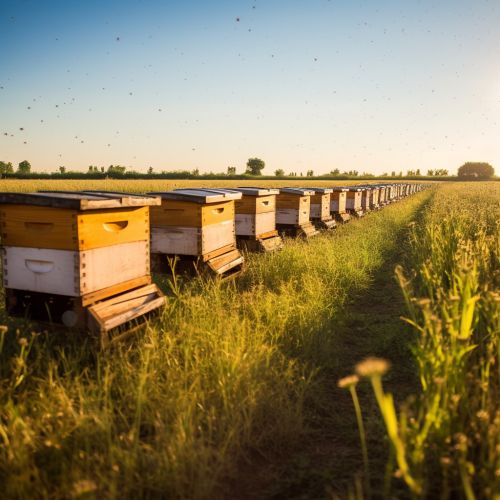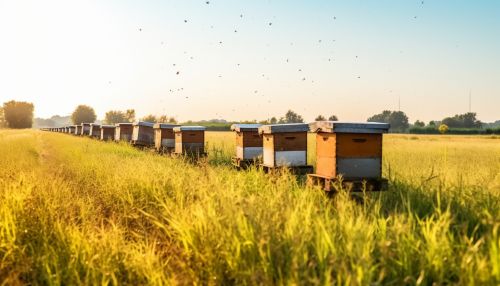Beekeeping
Introduction
Beekeeping, or apiculture, is the maintenance of bee colonies, usually in hives, by humans. It involves the practical study of the social behavior of bees and the natural history of honeybees. This practice has been in existence for thousands of years and has evolved into a science with its own specialized terminology and practices.
History
The history of beekeeping dates back to ancient times. Evidence of early beekeeping has been found in rock paintings and carvings from the Neolithic Age. The Egyptians were known to have practiced beekeeping as early as 2400 BC, as depicted in the sun temple of Nyuserre Ini. The Greeks also had a rich history of beekeeping, with Aristotle writing extensively about the life cycle of bees in his work, "Historia Animalium".


Bee Species
There are several species of bees that are suitable for beekeeping. The most common is the Western honey bee (Apis mellifera), which is native to Europe, Africa, and the Middle East. Other species include the Eastern honey bee (Apis cerana), the Giant honey bee (Apis dorsata), and the Dwarf honey bee (Apis florea).
Beekeeping Equipment
Beekeeping requires specialized equipment to handle bees and their hives. This includes the bee suit, which protects the beekeeper from stings; the smoker, which calms the bees; and the hive tool, which is used for opening hives and manipulating hive components. The most important piece of equipment is the hive itself, which can be of various types such as the Langstroth hive, the top-bar hive, or the Warre hive.
Beekeeping Practices
Beekeeping practices vary greatly depending on the goals of the beekeeper, the local environment, and the species of bee. Some beekeepers keep bees for honey production, while others may focus on pollination services or bee breeding. Practices also differ in terms of hive management, disease control, and wintering strategies.
Honey Production
Honey production is a major aspect of beekeeping. Bees collect nectar from flowers and convert it into honey, which is stored in the hive. The beekeeper can then harvest this honey for consumption or sale. The process of honey extraction involves removing the honeycomb from the hive, uncapping the cells, and using a centrifugal extractor to remove the honey.
Beekeeping Challenges
Beekeeping faces several challenges, including diseases, pests, and environmental factors. Diseases such as American foulbrood and Nosema can devastate a hive, while pests like the Varroa mite pose a significant threat to bee health. Environmental factors such as pesticide exposure, habitat loss, and climate change also impact bee populations.
Beekeeping and the Environment
Beekeeping plays a crucial role in the environment through the pollination of plants. Bees are one of the most important pollinators, and their decline due to various factors is a cause for concern. Beekeeping can help bolster bee populations and contribute to biodiversity.
Conclusion
Beekeeping is a fascinating and complex practice that combines elements of agriculture, biology, and ecology. It requires knowledge, skill, and a deep respect for the natural world. Despite the challenges, the rewards of beekeeping - from the production of honey to the preservation of our ecosystems - make it a worthwhile endeavor.
